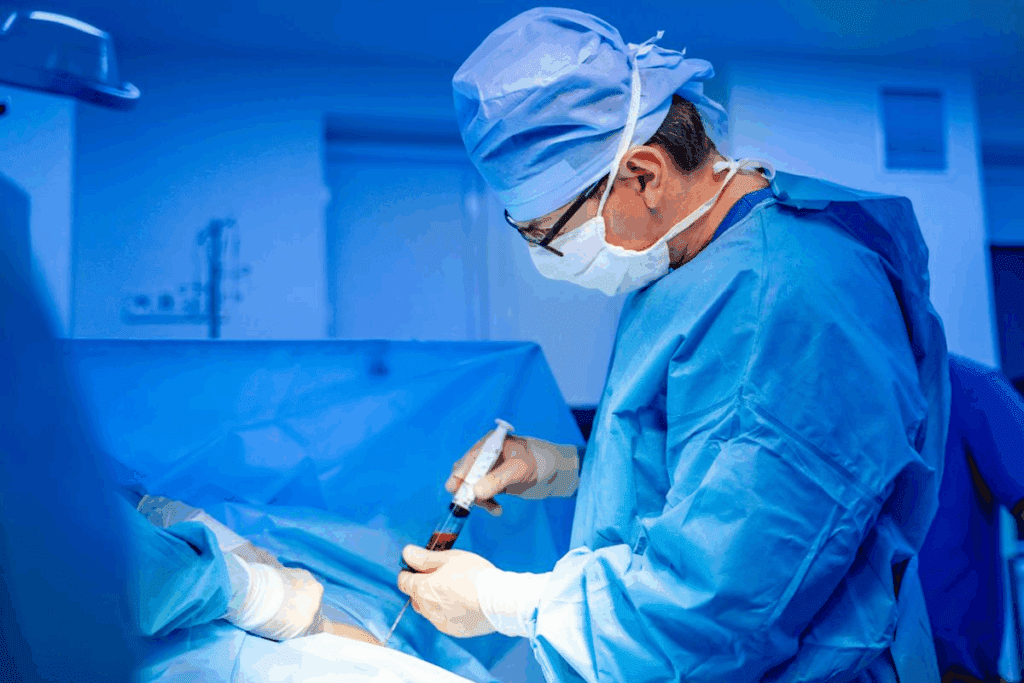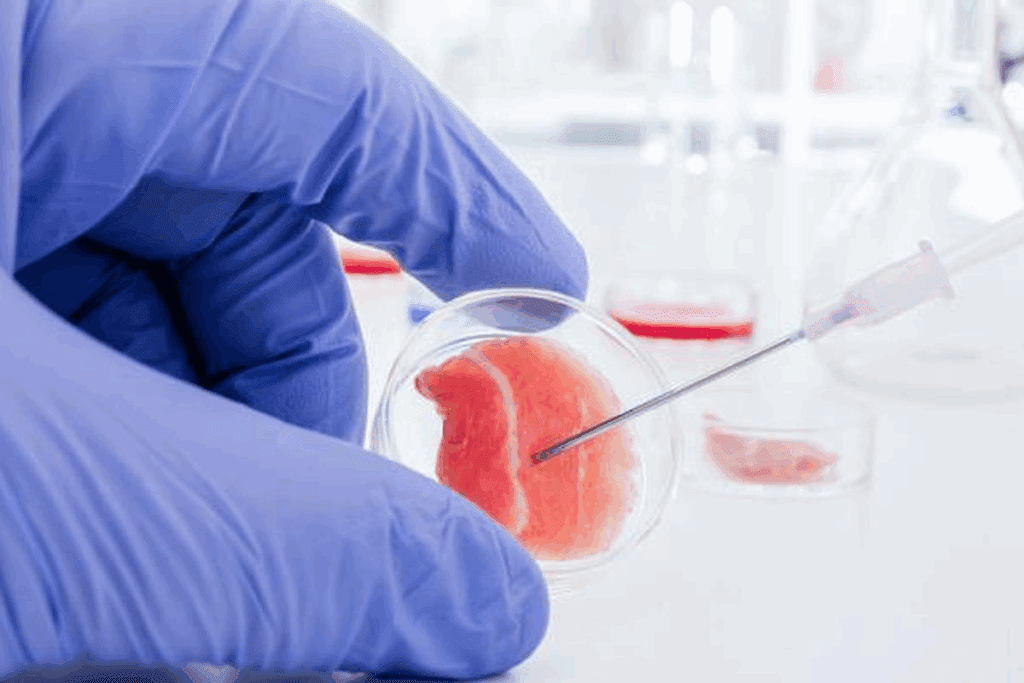Last Updated on November 17, 2025 by Ugurkan Demir

Recovering from a stem cell transplant is a long and complex journey. It goes beyond just the time spent in the hospital. Each step brings new questions about health, daily life, and the future.
A bone marrow transplant gives your body healthy stem cells. These cells replace the bone marrow that’s not working right. At Liv Hospital, we know this time can be tough. But with the right care and advice, patients can heal and live healthy lives.

Recovering from a stem cell transplant is unique for everyone. It depends on the type of transplant. We’ll help you understand the recovery process for autologous and allogeneic transplants.
The recovery time changes based on the transplant type. For an autologous stem cell transplant, where your own cells are used, recovery takes 3 to 12 months. On the other hand, an allogeneic transplant, which uses donor cells, may take longer. Full recovery of the immune system can take 12 to 18 months.
“The recovery process after a stem cell transplant is a marathon, not a sprint,” as one of our healthcare professionals aptly puts it.
“Patients need to be prepared for a journey that requires patience, resilience, and a strong support system.”
There are important milestones in the bone marrow transplant recovery timeline. First, patients are watched closely in the hospital for signs of engraftment. This usually happens within 2-4 weeks after the transplant. As the new stem cells start making blood cells, patients see their blood counts improve.
Our medical team works closely with patients to manage any complications and support their recovery. By understanding these milestones, patients can better navigate their recovery journey.

The first 30 days after a stem cell transplant are key for recovery. Patients need close monitoring and full care. They are at risk for infections and other issues, so strong medical support is a must.
Hospital monitoring is vital in the first 30 days after transplant. Patients need regular blood tests and visits with their healthcare team. This helps catch problems early, like graft-versus-host disease (GVHD) or infections.
Medical support is also key. Patients might need blood transfusions, antibiotics, and other treatments. Our medical team creates a care plan for each patient. This ensures they get the right support during this tough time.
Early recovery milestones show how well a patient is doing after a transplant. These include blood cell recovery, no severe infections, and good physical health. Reaching these milestones means the transplant is likely working well and the patient is recovering.
Some important early recovery milestones are:
Understanding these milestones and working with their healthcare team helps patients. This way, they can better manage their recovery and get the best results.
Keeping your immune system strong is key after a stem cell transplant. Your immune system is weak, making you more likely to get sick.
Rebuilding your immune system takes time and effort. Eating well and staying clean are important. Foods full of antioxidants, like fruits and veggies, can help your immune system.
Building your immune system after a transplant needs a few steps. Nutrition is vital. Eat foods rich in protein, vitamins, and minerals. Vitamin C in citrus fruits and greens is good for your immune system.
Good hygiene is also key. Wash your hands often, and avoid people who are sick. Staying away from sick people helps prevent infections.
Stopping infections is important after a transplant. Try to avoid crowded places. Wearing a mask can help too.
Keep up with vaccinations and follow your doctor’s advice on meds and supplements. Regular check-ups with your healthcare team are important. They help track your immune system’s recovery.
By protecting your immune system and preventing infections, you can have a better recovery after a transplant. We’re here to support you every step of the way.
After a stem cell transplant, patients face a new reality. They need to manage their days carefully. With the right strategies, they can get through their recovery.
Extreme fatigue is common after a stem cell transplant. It’s not just feeling tired; it’s a deep exhaustion. To deal with it, patients should save their energy.
They should pace their activities, take breaks, and focus on important tasks. Creating a daily routine that balances rest and activity is helpful. For example, resting after meals or activities can keep energy levels up. Gentle exercises, like short walks, can also boost stamina over time.
Physical changes and side effects are common after a stem cell transplant. These can include skin, hair, and nail changes, as well as graft-versus-host disease (GVHD). It’s important to understand these side effects and know how to manage them.
For example, dry skin or rashes are common. Using moisturizers and avoiding harsh soaps can help. For hair changes, gentle hair care products and avoiding too much heat styling are good ideas.
It’s also key for patients to watch for GVHD signs and talk to their healthcare team often. Early treatment can make a big difference.
By knowing what to expect after a stem cell transplant, patients can prepare for the challenges. With the right support and strategies, they can navigate life after the transplant more easily.
Nutrition and hydration are key to helping your body recover after a stem cell transplant. Eating well and drinking enough water are vital. They help your body heal, get stronger, and feel better overall.
After a stem cell transplant, eat foods rich in nutrients. Choose whole foods like fruits, veggies, whole grains, lean proteins, and healthy fats. These foods give your body the vitamins, minerals, and antioxidants it needs to recover well.
Remember to be careful with food safety to avoid infections. Avoid raw or undercooked foods, unpasteurized dairy, and foods with high bacteria like Listeria.
Drinking enough water is very important for recovery. Drink lots of fluids like water, clear broths, and drinks with electrolytes. This helps prevent dehydration and keeps your body working right.
Some patients might need nutritional supplements to get enough nutrients. This could include vitamins, minerals, and protein. But always talk to a doctor before taking any supplements to make sure they’re safe and right for you.
By eating well and staying hydrated, you can help your body recover and feel better after a stem cell transplant.
Patients getting allogeneic stem cell transplants face a risk of graft-versus-host disease (GVHD). GVHD happens when the donated stem cells see the recipient’s body as foreign and attack it. This can really affect how well a patient recovers and their overall health.
GVHD can show up in different ways and levels of severity. It can be acute or chronic GVHD, each with its own signs.
It’s very important to catch GVHD early. Patients should watch their health closely and tell their doctor about any strange symptoms.
Handling GVHD needs both medical help and lifestyle changes. The aim is to lessen the immune response and ease symptoms.
| Treatment Approach | Description |
| Immunosuppressive Medications | Drugs that weaken the immune system to stop the graft from attacking the host. |
| Corticosteroids | Used to cut down inflammation and weaken the immune response. |
| Topical Treatments | Creams or ointments are applied directly to the skin to manage symptoms. |
Patients can also use self-care strategies to manage GVHD:
By understanding GVHD and working with their healthcare team, patients can manage this condition better. This can help improve their bone marrow transplant recovery time and overall recovery from the bone marrow transplant.
After stem cell treatment, it’s key to stay away from certain things to recover well. We know recovery can be tough. But knowing what to avoid can help you avoid problems.
It’s important to skip activities that could cause harm during recovery. These include:
Managing your meds and supplements is key after stem cell treatment. Here’s what to do:
| Medication/Supplement | Precaution |
| Immunosuppressive drugs | Take as directed by your healthcare provider to prevent graft-versus-host disease |
| Antibiotics and antivirals | Complete the full course as prescribed to prevent infections |
| Herbal supplements | Consult your healthcare provider before taking any supplements, as they may interact with your medications |
By following these tips and avoiding risky activities, you can lower the chance of problems. This helps you recover better.
Recovering from a stem cell transplant is not just about getting better physically. It’s also about healing emotionally. The journey can be tough, and the recovery period is no different. Emotional healing is key to feeling whole again.
Recovery brings a mix of feelings, from anxiety to relief. It’s important to manage these emotions well. Patients should talk to their healthcare team about their feelings. Mindfulness, meditation, and counseling can help too.
Many wonder, “How long after a stem cell transplant will I feel better?” Emotional healing happens alongside physical recovery. Doing things that make you happy and taking care of yourself can help a lot.
A strong support network is essential for emotional healing. Family, friends, and support groups offer the emotional support needed. We suggest reaching out to loved ones and joining a support group.
By 60 days after a bone marrow transplant, life starts to feel more normal. But it’s important to keep up with emotional self-care and a strong support network. This time is critical for long-term healing and recovery.
By focusing on emotional healing and building a strong support system, patients can face recovery challenges with more confidence.
Life after a bone marrow transplant is a big change. It’s key to live healthily to stay well. We suggest changing your diet and lifestyle to help you recover fully.
Many patients ask when they can drink alcohol again after a transplant. The answer depends on your situation. Always listen to your doctor’s advice to keep your health first.
We at our institution aim to give top-notch care. We support patients worldwide with detailed help and advice. Our team will help you create a care plan that fits your needs, making your transition smoother.
Starting this new chapter with smart choices can lead to a happy life post-transplant. We’re here to support you, providing the care and advice you need to succeed.
After a stem cell transplant, patients need to recover in the hospital. They will manage side effects and protect their immune system. The first 30 days are very important, and patients must follow a strict care plan.
Recovery time from a bone marrow transplant varies. It depends on the transplant type, the patient’s health, and other factors. It can take several months to a year or more to fully recover.
To build a strong immune system after a stem cell transplant, patients should prevent infections. They should also eat well, stay hydrated, and follow their medication. A balanced diet and hydration are key.
Key milestones include engraftment, which happens in 2-4 weeks. Blood counts and immune function improve over several months.
To manage extreme fatigue, conserve energy, and take breaks. Prioritize activities and maintain a healthy lifestyle. A balanced diet and regular exercise are important.
It’s best to avoid or limit alcohol after a stem cell transplant. Alcohol can interact with medications and weaken the immune system. Always check with your healthcare provider.
Graft-versus-host disease (GVHD) can cause skin rash, diarrhea, and abdominal pain. It can also affect the liver. If you notice these symptoms, tell your healthcare provider right away.
Coping with physical changes and side effects requires a team effort. Manage medications, make lifestyle changes, and seek emotional support. Work closely with your healthcare team.
After an autologous stem cell transplant, eat a balanced diet. Include fruits, vegetables, whole grains, and lean proteins. Stay hydrated and avoid foods that weaken the immune system.
Avoid high-risk activities like contact sports and heavy lifting during recovery. Also, avoid infections and take precautions to prevent falls and accidents.
Subscribe to our e-newsletter to stay informed about the latest innovations in the world of health and exclusive offers!